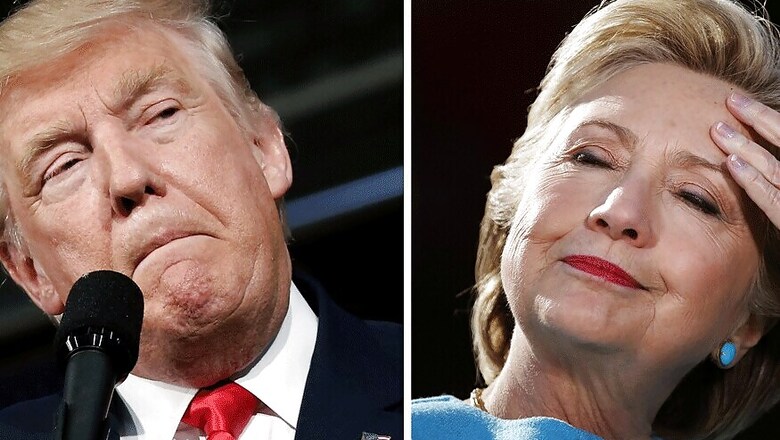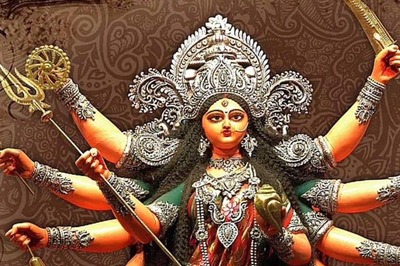
views
San Francisco: The opinions of the Indian American community surrounding the ongoing American Presidential election are as diverse as the Indian American community itself. While half of the Indian American population belongs to Hindu communities, the remaining primarily have Sikh, Muslim and Christian religious identities. Given this heterogeneity of the Indian community in the U.S., which further extends to differences in language and culture, it is unsurprising that the meaning attributed to the ongoing election varies based on differences in priorities, needs and concerns of several Indian-American subgroups. While I look forward to delving into the varying opinions surrounding these elections from the second generation Indian-American perspective, it is important to emphasize that my understanding of the implications of the election may be uniquely shaped by my individual context. As an Indian-American who has recently lived in India and witnessed the Indian perspective on the election that primarily remains concerned with questions about who will win and what that will mean for India-U.S. relations, I would like to state at the outset, that while November 8 is a pivotal day for the future of the world, my concern is with the damage that has already been done to the Indian-American identity during the race.
Unlike first-generation Indian-Americans who immigrated to the U.S. with defined priorities to pursue greater opportunities for education and income, second-generation Indian-Americans have been born into a society with the status of being one of the leading Asian-American subgroups in terms of access to education and wealth. To understand how this status affects the Indian-American sense of self, it is useful to view America as an institution where the Indian-American serves the function of portraying America as the land of equal opportunity where the equation between hard work and success remains unaffected by historic, social or systemic variables. While this type of positive stereotyping may seem flattering at first, it also means that the struggles of Indian-American minorities are being trivialized by dismissing how Islamophobia, genocide, war and the history of marginalization experienced by especially Muslim and Sikh communities in India may have shaped their access to opportunities in the U.S. While first generation Indian-Americans may have sought a sense of belonging from being ascribed the model minority role and equating success to education and income, the second generation Indian-American’s self-image is largely rooted in a desire for an inclusive America that recognizes the complexity of the Indian-American identity. After a lifetime of negotiation between one’s own understanding of the diversity within the Indian-American community and the prominent perception of Indian-Americans characterized by convenient homogenization that overlooks religious and ethnic differences, the second generation Indian American is often found fitting the “Indian-American” box in the larger American context, by internalizing this belief in the sameness of Indian-Americans and dismissing diversity.
This dismissal of difference, is often accompanied with a desire to assimilate with the prescribed ‘white ideal’, which leads several second-generation Americans to remain unquestioning of why they are higher up in the hierarchy among communities of color. Thus, several Indian-Americans continue to serve the function of further oppressing Black and Hispanic communities without realizing that their success has been a result of the privilege and role given to them by America as part of an attempt to perpetuate a pre-existing racial hierarchy. Several other young Indian-Americans, however, feel a sense of responsibility to establish solidarity and empower other communities of color, and furthermore, are interested in ensuring that Indian minority groups in America are not affected by any systemic injustice. While these differences in approaches to navigating a hyphenated American identity will evidently shape the Indian-American’s vote in this presidential election, the election process has had a universal impact on this diverse group- it has finally vocalized what has been implicit in the institution of America. The tone has been set for the treatment of Indian-Americans, along with other communities of color, and discrimination (though varying in levels of blatancy), has been normalized. The large portion of Americans that support Trump (including Indian-Americans who have internalized the need to subjugate for success) have already brought transparency to the reality of America, where “otherness” is a valid reason for inferior treatment. The hateful speech towards Muslim-Americans and condescension directed towards Sikh-Americans by Trump coupled with Clinton’s expectation that Muslim-Americans must be on the frontlines of the war on terror purely because of their religious identity has served to make second generation Indian-Americans feel unsafe and highlighted the inherent prejudice rampant in America. Furthermore, the celebration and normalization of the Hindu-American as the model Indian-American has reminded the second-generation American about the need to recognize and understand differences in the histories of Indian-American subgroups since the hierarchy between the different subgroups of Indian-Americans has also been normalized through the presidential campaigns. What was probably implied before, has now been declared.
The second-generation Indian-American remains concerned with the freedom for fearless political participation and unlike the previous generation, cannot remain content merely by the glorification and acceptance of a single subgroup. Regardless of who wins, the process of the presidential election has ensured that minorities within the Indian-American community are not even afforded the problematic luxury of positive stereotyping. The stark need to foster solidarity between Indian-American subgroups without erasing histories that shape the diversity of the Indian-American identity has come to the forefront. The belief in the sameness of the Indian-American identity was probably convenient for Indian-American communities for a very long time when first generation immigrants were struggling to be positively accepted. However, the attacks on minority subgroups that have become acceptable and normative through the course of this election have emphasized the need for second generation Indian-Americans to recognize difference and use it as a tool for socio-political advancement. It has also highlighted how the relative power ascribed to this population that comprises nearly 3.2 million people has been used as a means to brush over the discrimination prevalent against a significant proportion of the Indian-American community. While the vocalization of popular opinions in America has created a disillusioning sense of awareness about the social inequalities that often get hidden in dominant narratives of America, it may have also provided further evidence regarding the need for second generation Indian-Americans to identify the interconnections between their struggles and those of other marginalized communities of color. Therefore, this election has led to an increasing number of Indian-Americans that have realized the need to prioritize the struggles of all minority groups and remain invested in the currently unimaginable utopia of a truly inclusive America.
The reality of America has been clarified repeatedly through this election, and who wins will not erase this realization. The winner of the presidential election, however, will shape the ability and potential of the Indian-American community to mobilize and organize themselves as a powerful comrade for other marginalized groups that face institutionalized oppression. Therefore, the importance of this election is primarily rooted in the impact that it will have on the potential of the Indian-American to challenge the normalization of discrimination and oppression.
(Sneha Tatapudy holds a BA degree in International Studies and Communication from the University of California, Santa Barbara. She lives in San Francisco.>)



















Comments
0 comment